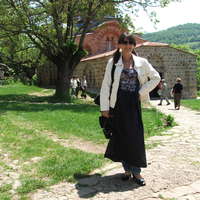- Ancient Archaeology, Roman Pottery, Classical Archaeology, Roman History, Ceramic Analysis (Archaeology), Ceramics (Archaeology), and 39 moreArchaeology, Ancient History, Landscape Archaeology, Medieval Archaeology, Archaeological Method & Theory, Historical Archaeology, Late Antiquity, Roman Glass, Roman Mosaics, Late Antique and Byzantine Studies, Archaeological GIS, Early Medieval Archaeology, Mediterranean archaeology, Public Archaeology, Terra Sigillata, Ceramica Romana, Roman ceramics, Roman Pottery Kilns, Roman Architecture, Roman Lamps, Ancient Glass, Ancient Water Technology, Roman brick and tile, Roman Brick Industry - Brickstamps, Roman Archaeology, Roman pottery workshops, Roman pottery kilns, roman pottery technology, roman archaeology, Ancient Graffiti (Archaeology), Roman Africa, Roman Marble trade and distribution, Roman Mosaics and Wall Paintings, Medieval Wall Paintings, Roman Wall Painting, Pompeii and Herculaneum, Roman Painting, Samian Ware, Ceramic Stamps, Roman Provincial Archaeology, and Ancient Mosaicsedit
Research Interests:
The production of lime is one of the simplest chemical processes for preparation of building material. The structure of the ovens and the process of the lime production are describes in the writings of Vitruvius, Cato and Pliny the... more
The production of lime is one of the simplest chemical processes for preparation of building material. The structure of the ovens and the process of the lime production are describes in the writings of Vitruvius, Cato and Pliny the Elder.
The two ovens for lime are located on 11 km distance from one another. They are located on the flanks of Sredna gora near water sources.
The two ovens for lime are located on 11 km distance from one another. They are located on the flanks of Sredna gora near water sources.
